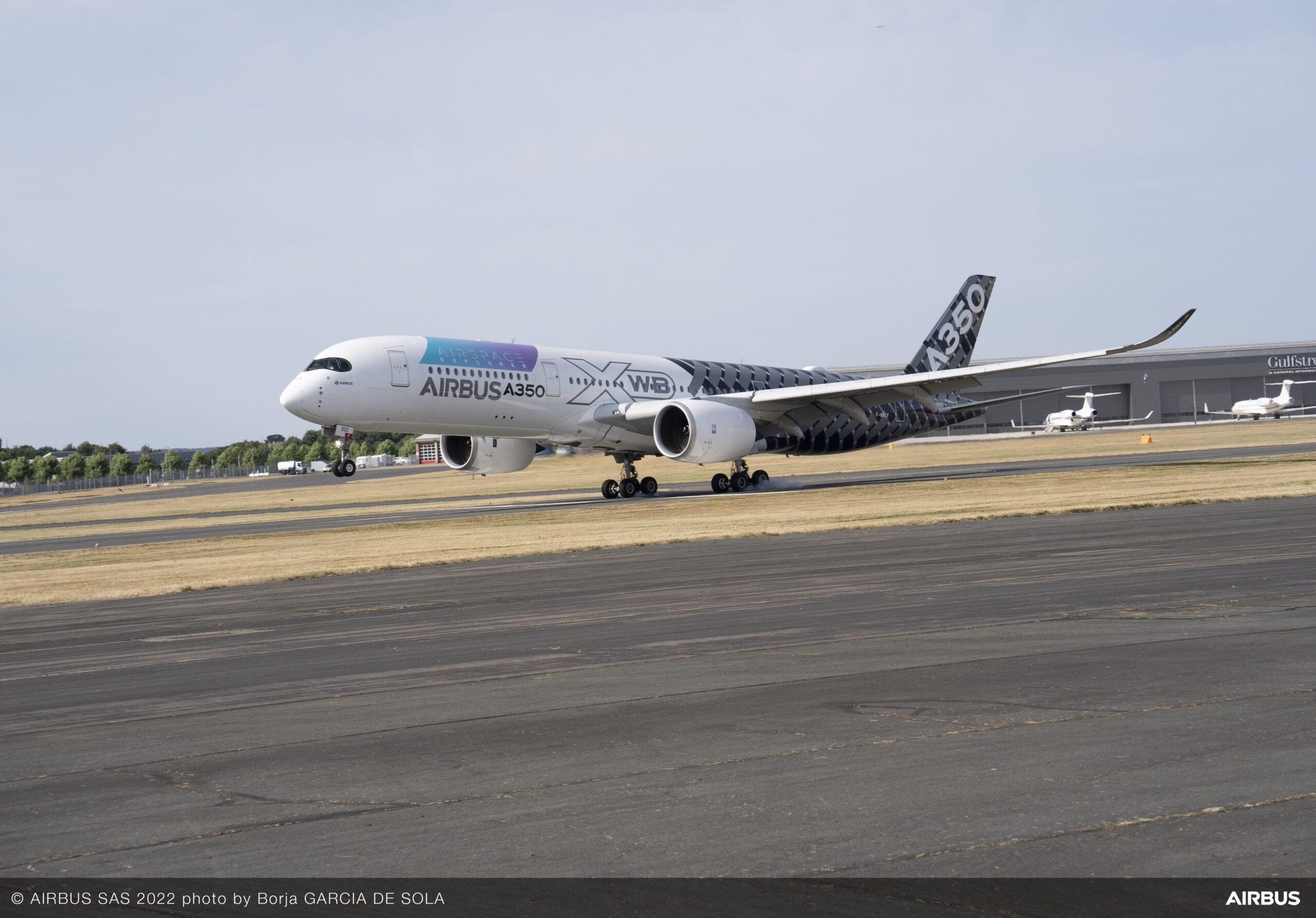
Farnborough airshow before opening A350 900 Airbus arrival scaled
The Airbus A350-900 and Boeing 787-9 are the best-selling wide-body variants in the market today. These aircraft are remarkably similar in many respects. Each utilizes a high percentage of lightweight carbon fiber materials in its structure, with 53% of the A350 and 50% of the 787 by weight composed of that material. Both are long-range twins with modern fuel-efficient engines. Both enable comfortable premium cabins and a variety of interior layouts that can be tailored to airline needs. The following table illustrates just how close these aircraft are.

The A350-900 has a 665 nautical mile advantage in range, while the 787-9 has a lighter maximum take-off weight by 62,408 pounds. The A350-900 offers more seating in a typical configuration, which we would expect to result in a lower seat-mile cost. The 787-9, being a lighter aircraft, would be expected to have a lower cost per aircraft mile. To find out if those assumptions are true, we examined 2022 data from Skailark’s database of aircraft costs for both North American (including Canada, the US, and Mexico) and European carriers to provide a representative sample for each aircraft type.
The following chart from Skailark illustrates the total operating costs per seat for the Airbus A350-900 and Boeing 787-9, by carrier, including capital cost for the aircraft. The cost categories shown on the chart below include overheads, onboard costs, sales and distribution costs, ATC costs, airport passenger costs, airport landing fees, handling costs, cabin crew, flight crew, MRO, ownership financing, ownership costs and fuel costs, all from the top down, respectively.
After analyzing cost data, it is clear the Airbus A350-900 and Boeing 787-9 are also close in economic performance. The A350 has an average total cost per seat mile of $0.1210, and a cost per block hour of $18,370 across seven different operators, as shown in the table below.
The 787-9 has an average total cost per seat mile of $0.1250. This places the total cost per seat mile for the 787-9 at 3.3% higher than the A350. On an aircraft mile basis, the 787-9 averaged a block hour cost of $16,899, or 8% lower than the A350-900.

The Bottom Line:
The Airbus A350-900 and Boeing 787-9 are very similar aircraft, suited for similar missions. As one would expect, the slightly larger A350-900 has a seat-mile cost advantage, while the 787-9 has an advantage in cost per block hour. These aircraft are competitive, and nearly tie in economic performance. Each aircraft has been selling well since the A350-900 joined the 787-9 in the marketplace, and the future for both looks bright.
Views: 3046





It is very nice comparison.